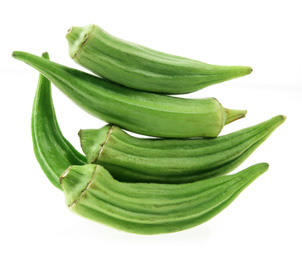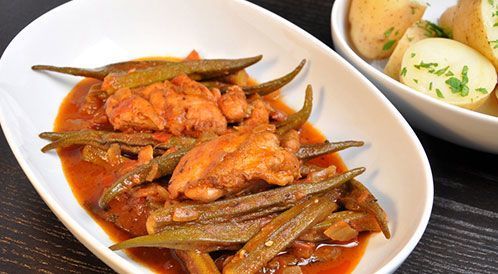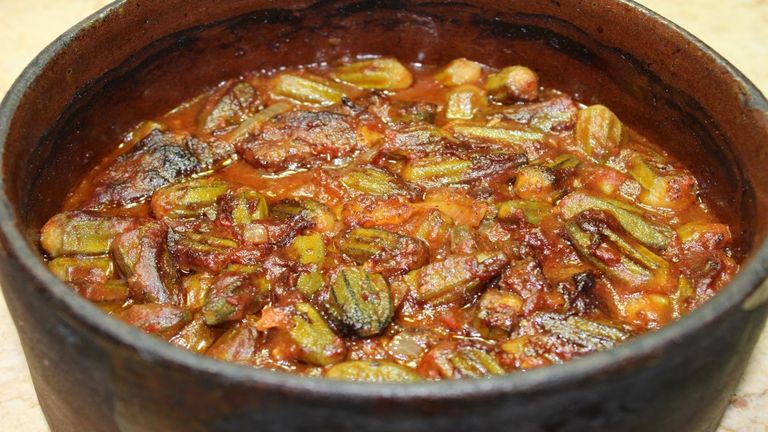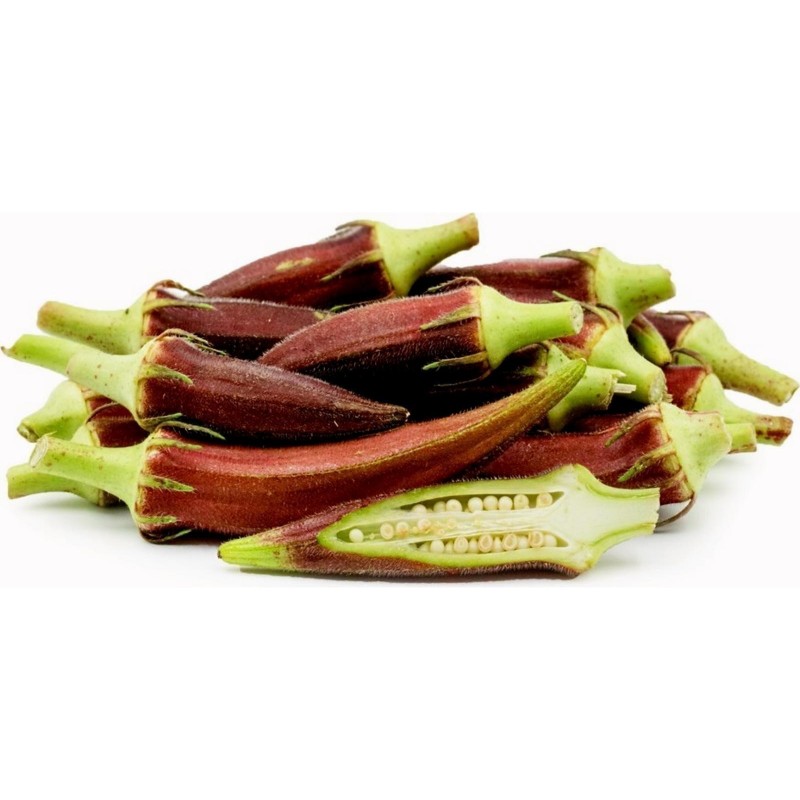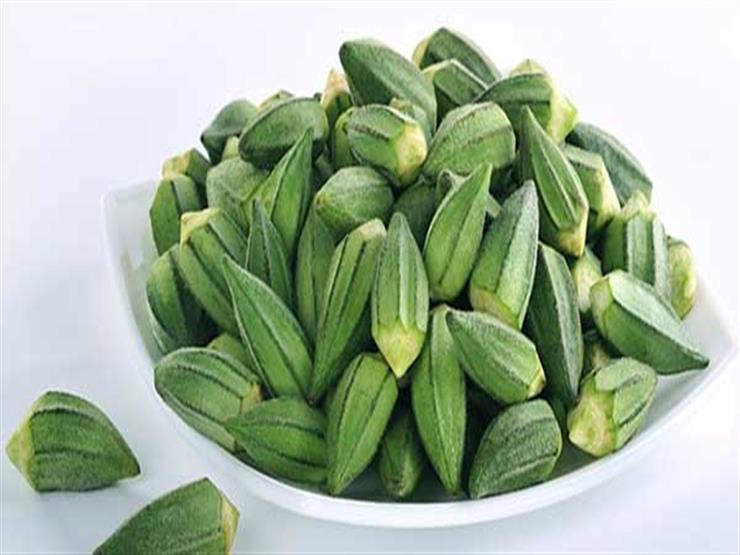


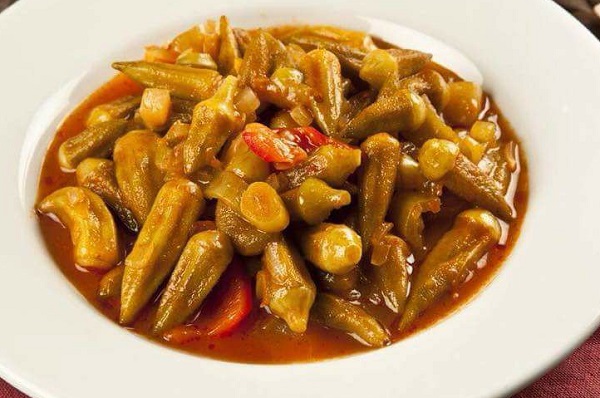
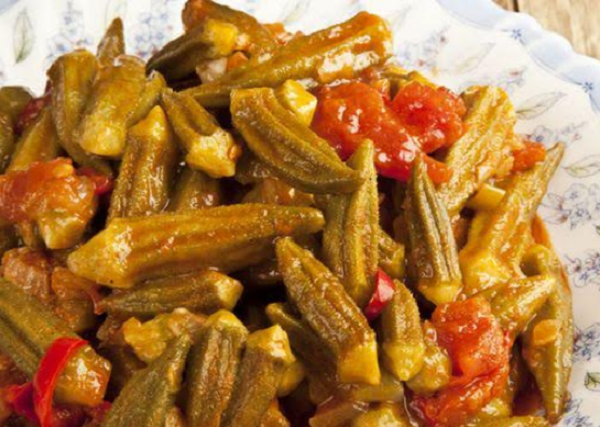


من فوائد البامية لصحة الإنسان، نذكر منها مايلي:
• تقي الجسم من الإصابة بنزلات البرد، والرّشح والإنفلونزا.
• تُعزّز عمل جهاز المناعة، وتَمنع إصابة الجسم بالأمراض المعدية.
• تقلل احتمالية الإصابة بالسرطانات، خصوصاً سرطان القولون.
• تقلل احتمالية الغصابة بأمراض القلب والأوعية الدموية.
• تقلل نسبة الكولسترول الضار في الدم، وتقي من الإصابة بتصلب الشرايين.
• تمنع الإصابة بمرض السكري؛ حيث تنظم مستوى السكر في الدم، وتبطء امتصاص السكر.
•تعيد للشعر رونقه وقوته، وتزيد طوله، وتخلّصه من القمل والصئبان والقشرة، عن طريق غسل الشعر بمنقوع بذور ثمار البامية.
• تمنح البشرة النضارة والحيوية، وتعمل على تفتيحها، كما تحافظ على صحة أنسجة الجلد، خصوصاً تلك المرتبطة مع الكولاجين. تمنع تشوّهات الأجنة، وتحافظ على صحة الأم والجنين، وتمنع إصابة الجنين بتشوهات العمود الفقري، وتساعد على نموه بشكلٍ سليم.
• تحافظ على صحة الكلى، وتطهرها من الجراثيم.
•تطهر الجهاز الهضمي، خصوصاً الأمعاء والقولون، وتساعد على الهضم الصحي للغذاء.
• تليّن المعدة والأمعاء، وتمنع الإصابة بالإمساك، وتخلّص الجسم من الفضلات والسموم.
• تمنع الإصابة بمرض الربو التحسسي، وتحافظ على صحة الجهاز التنفسي بشكلٍ عام، خصوصاً عند الأطفال.
• تساعد على تخسيس وزن الجسم.
• تقضي على الجراثيم والميكروبات في الجسم.
• تزيد الرغبة الجنسية عند الرجل والمرأة.
• تقي من الإصابة بفقر الدم “الأنيميا”.
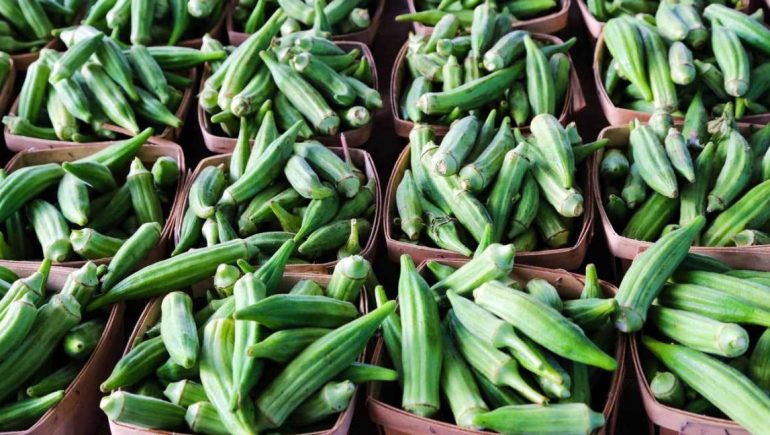

ـــــــــــــــــــــــــــــــــــ
Okra
From Wikipedia, the free encyclopediaJump to navigationJump to searchFor other uses, see Okra (disambiguation).
| Okra | |
|---|---|
| Okra plant with mature and developing fruits in Hong Kong | |
| Okra in longitudinal section | |
| Scientific classification | |
| Kingdom: | Plantae |
| Clade: | Tracheophytes |
| Clade: | Angiosperms |
| Clade: | Eudicots |
| Clade: | Rosids |
| Order: | Malvales |
| Family: | Malvaceae |
| Genus: | Abelmoschus |
| Species: | A. esculentus |
| Binomial name | |
| Abelmoschus esculentus (L.) Moench | |
| Synonyms[1] | |
| Abelmoschus bammia Webbabelmoschus longifolius (Willd.) Kostel.Abelmoschus officinalis (DC.) Endl.Abelmoschus praecox Sickenb.Abelmoschus tuberculatus Pal & SinghHibiscus esculentus L.Hibiscus hispidissimus A.Chev. nom. illeg.Hibiscus longifolius Willd.Hibiscus praecox Forssk. |
Okra or Okro (US: /ˈoʊkrə/, UK: /ˈɒkrə/), Abelmoschus esculentus, known in many English-speaking countries as ladies’ fingers or ochro, is a flowering plant in the mallow family. It is valued for its edible green seed pods. The geographical origin of okra is disputed, with supporters of West African, Ethiopian, and South Asian origins. The plant is cultivated in tropical, subtropical and warm temperate regions around the world.[2]
Etymology[edit]
‘Abelmoschus‘ is New Latin from Arabic أَبُو المِسْك (ʾabū l-misk, “father of musk”).[3] ‘esculentus‘ is Latin for being fit for human consumption.[4]
The first use of the word okra (Alternatively; okro or ochro) appeared on 1679 in the Colony of Virginia, deriving from the Igbo word ọ́kụ̀rụ̀.[5] The word gumbo was first recorded to be used in American vernacular around 1805, deriving from Louisiana Creole,[6] but originates from either the Umbundu word ochinggômbo[7] or the Kimbundu word ki-ngombo.[8] Despite the fact that in most of the United States the word gumbo often refers to the dish, gumbo, many places in the Deep South still use it to refer to the pods and plant as well as many other variants of the word found across the African diaspora in the Americas.[9]
Origin and distribution[edit]
Whole plant with blossom and immature pod
Okra is an allopolyploid of uncertain parentage. However, proposed parents include Abelmoschus ficulneus, A. tuberculatus and a reported “diploid” form of okra. Truly wild (as opposed to naturalised) populations are not known with certainty, and the species may be a cultigen. The geographical origin of okra is disputed, with supporters of South Asian, Ethiopian and West African origins. The Egyptians and Moors of the 12th and 13th centuries used the Arabic word for the plant, bamya, suggesting it had come into Egypt from Arabia, but earlier it was probably taken from Ethiopia to Arabia. The plant may have entered southwest Asia across the Red Sea or the Bab-el-Mandeb straight to the Arabian Peninsula, rather than north across the Sahara, or from India. One of the earliest accounts is by a Spanish Moor who visited Egypt in 1216 and described the plant under cultivation by the locals who ate the tender, young pods with meal.[10] From Arabia, the plant spread around the shores of the Mediterranean Sea and eastward. The plant was introduced to the Americas by ships plying the Atlantic slave trade[11] by 1658, when its presence was recorded in Brazil. It was further documented in Suriname in 1686. Okra may have been introduced to southeastern North America from Africa in the early 18th century. By 1748, it was being grown as far north as Philadelphia. Thomas Jefferson noted it was well established in Virginia by 1781. It was commonplace throughout the Southern United States by 1800, and the first mention of different cultivars was in 1806.[10]
Botany and cultivation[edit]
Okra plant pollenLatitudinal cross-section of the okra pod
| This section needs additional citations for verification. Please help improve this article by adding citations to reliable sources. Unsourced material may be challenged and removed. Find sources: “Okra” – news · newspapers · books · scholar · JSTOR (January 2020) (Learn how and when to remove this template message) |
The species is a perennial, often cultivated as an annual in temperate climates, often growing to around 2 metres (6.6 ft) tall. As a member of the Malvaceae, it is related to such species as cotton, cocoa, and hibiscus. The leaves are 10–20 centimetres (3.9–7.9 in) long and broad, palmately lobed with 5–7 lobes. The flowers are 4–8 centimetres (1.6–3.1 in) in diameter, with five white to yellow petals, often with a red or purple spot at the base of each petal. The pollens are spherical with approximately 188 microns diameter. The fruit is a capsule up to 18 centimetres (7.1 in) long with pentagonal cross-section, containing numerous seeds.
Abelmoschus esculentus is cultivated throughout the tropical and warm temperate regions of the world for its fibrous fruits or pods containing round, white seeds. It is among the most heat- and drought-tolerant vegetable species in the world and will tolerate soils with heavy clay and intermittent moisture, but frost can damage the pods. In cultivation, the seeds are soaked overnight prior to planting to a depth of 1–2 centimetres (0.39–0.79 in). It prefers a soil temperature of at least 20 °C (68 °F) for germination which occurs between six days (soaked seeds) and three weeks. Seedlings require ample water. The seed pods rapidly become fibrous and woody and, to be edible as a vegetable, must be harvested when immature, usually within a week after pollination.[12] Okra is available in two varieties, green and red. Red okra carries the same flavor as the more popular green okra and differs only in color. When cooked, the red okra pods turn green.
The most common disease afflicting the okra plant is verticillium wilt, often causing a yellowing and wilting of the leaves. Other diseases include powdery mildew in dry tropical regions, leaf spots, and root-knot nematodes.
Food and uses[edit]
Stir-fried okra with diced chili peppers
| Nutritional value per 100 g (3.5 oz) | |
|---|---|
| Energy | 138 kJ (33 kcal) |
| Carbohydrates | 7.46 g |
| Sugars | 1.48 g |
| Dietary fibre | 3.3 g |
| Fat | 0.19 g |
| Protein | 1.9 g |
| Vitamins | Quantity%DV† |
| Vitamin A equiv. | 5%36 μg |
| Thiamine (B1) | 17%0.2 mg |
| Riboflavin (B2) | 5%0.06 mg |
| Niacin (B3) | 7%1 mg |
| Folate (B9) | 15%60 μg |
| Vitamin C | 28%23 mg |
| Vitamin E | 2%0.27 mg |
| Vitamin K | 30%31.3 μg |
| Minerals | Quantity%DV† |
| Calcium | 8%82 mg |
| Iron | 5%0.62 mg |
| Magnesium | 16%57 mg |
| Phosphorus | 9%61 mg |
| Potassium | 6%299 mg |
| Zinc | 6%0.58 mg |
| Other constituents | Quantity |
| Water | 89.6 g |
| Link to Full USDA Database entry | |
| Unitsμg = micrograms • mg = milligramsIU = International units | |
| †Percentages are roughly approximated using US recommendations for adults. |
The products of the plant are mucilaginous, resulting in the characteristic “goo” or slime when the seed pods are cooked; the mucilage contains soluble fiber.[13] One possible way to de-slime okra is to cook it with an acidic food, such as tomatoes, to render the mucilage less viscous.[14] Pods are cooked, pickled, eaten raw, or included in salads. Okra may be used in developing countries to mitigate malnutrition and alleviate food insecurity.[13]
Nutrition[edit]
Raw okra is 90% water, 2% protein, 7% carbohydrates and negligible in fat. In a 100 gram amount, raw okra is rich (20% or more of the Daily Value, DV) in dietary fiber, vitamin C and vitamin K, with moderate contents of thiamin, folate and magnesium (table).
Leaves and seeds[edit]
Young okra leaves may be cooked in a similar way to the greens of beets or dandelions, or in salads.[citation needed] Okra seeds may be roasted and ground to form a caffeine-free substitute for coffee.[10] When importation of coffee was disrupted by the American Civil War in 1861, the Austin State Gazette said, “An acre of okra will produce seed enough to furnish a plantation with coffee in every way equal to that imported from Rio.”[15]
Greenish-yellow edible okra oil is pressed from okra seeds; it has a pleasant taste and odor, and is high in unsaturated fats such as oleic acid and linoleic acid.[16] The oil content of some varieties of the seed is about 40%. At 794 kg/ha, the yield was exceeded only by that of sunflower oil in one trial.[17] A 1920 study found that a sample contained 15% oil.[18] A 2009 study found okra oil suitable for use as a biofuel.[19]
Industrial uses[edit]
Bast fibre from the stem of the plant has industrial uses such as the reinforcement of polymer composites.[20] The mucilage produced by the okra plant can be used for the removal of turbidity from wastewater by virtue of its flocculent properties.[21][22] Having composition similar to a thick polysaccharide film, okra mucilage is under development as a biodegradable food packaging, as of 2018.[23]
Gallery[edit]
Okra
- Large okra plant
- Okra flower blossom close-up
- Okra cotyledon
- Sautéed okra with coriander
- Shrimp gumbo with pieces of okra
- Okra curry
- Stewed okra with tomatoes
- Bhindi bharta, a south Asian okra dish
- Okra sauce from Togo
- Okro flowe
- ـــــــــــــــــــــــــــــــــــــ
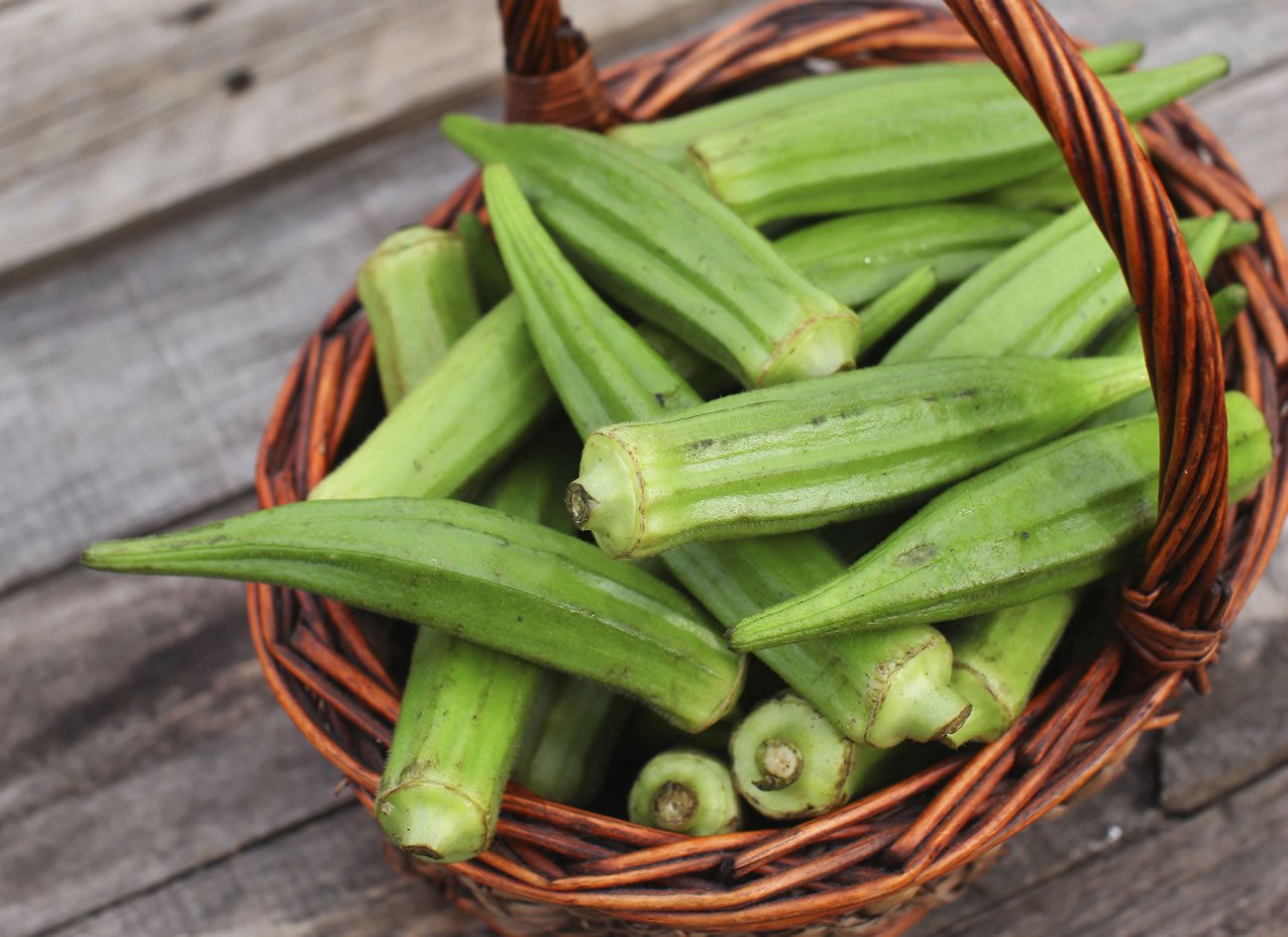
فوائد البامية: كنز صحي للذواقة!
البامية هي نوع من الخضار الشائعة في حوض المتوسط وفوائد البامية لا تعد ولا تحصى. فلنتعرف عليها بالتفصيل في المقال التالي.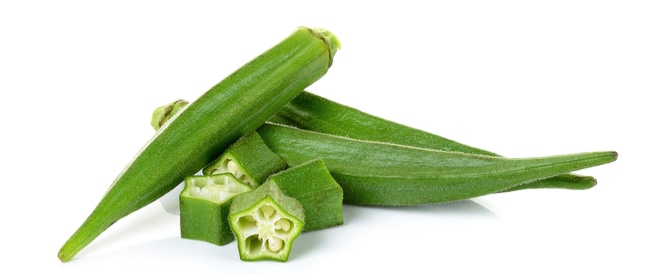
البامية “Okra” هي نوع من الخضار الشائعة في حوض المتوسط و فوائد البامية لا تعد ولا تحصى. فتناول البامية على أساس ثابت يساعد النظام الهضمي ويحمي من الأمراض المختلفة.
البامية مشهورة بقوامها اللزج، الذي يؤدي لردود فعل حادة ومتناقضة- إما الكراهية الشديدة والشعور بالنفور أو العشق وفتح القابلية.القيمة الغذائية للبامية
تنبع قيمة البامية الغذائية من محتواها الغني من العناصر الغذائية المختلفة، إذ يحتوي كل 100 غرام من البامية على:
- 33 سعر حراري.
- 1.93 غرام من البروتينات.
- 7 ملغرام من الصوديوم.
- 23 ملغرام من فيتامين سي.
- 0.2 ملغرام من الثيامين.
- 82 ملغرام من الكالسيوم.
- 60 ميكروغرام من حمض الفوليك.
- 3.2 غرام من الألياف.
- 0.19 غرام من الدهون.
- 31.3 ملغرام من فيتامين ك.
- 299 ملغرام من البوتاسيوم.
- 57 ملغرام من المغنيسيوم.
كما وتعتبر البامية مصدراً جيداً للحديد والفسفور والنحاس ومضادات الأكسدة المختلفة.
فوائد البامية
للبامية فوائد صحية مذهلة، إليك قائمة بأهمها:
1- مكافحة السرطان
تحتوي البامية على بروتين يسمى الليكتين، هذا النوع من البروتينات أظهرت الدراسات أنه يساعد على مكافحة نمو الخلايا السرطانية، خاصة عندما يتعلق الأمر بسرطان الثدي.

